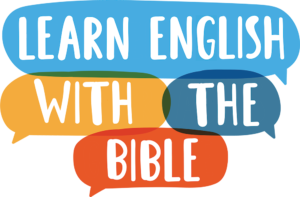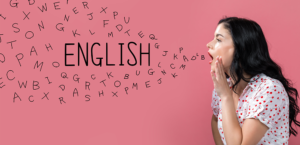
This is the final in a series of three posts about how words are linked together in spoken English.
In the first post, we talked about linking vowel sounds together. You can read that post here.
In the second post, we talked about linking consonant sounds together. You can read that post here.
In this post, we’re going to talk about how to link consonants and vowels together.
Words That End With Consonants
Most English words end with consonants. To help English speech sound fluid and connected, we need to link consonants to vowels as much as possible. Those vowels can be found in the next word. Look at this example:
- You cannot go where I am going.” (John 7:34)
“Where” ends with the “r” consonant sound. The following word is a vowel sound, long “i.” We will usually move the last consonant sound of the first word to the beginning of the following word – “whe-ri.” Now listen to the audio. The first sample does not use linking, and the second sample links “where” to “I.”
No Linking
With Linking
Can you hear the difference? When you link the consonants and vowels, the sound is much smoother and easier to say. Here’s another example:
- The people asked each other… (John 7:35)
“Each” links with “other” to form “ea-chother.” Listen to the audio:
No Linking
With Linking
If you are wondering about the words “people asked,” that’s a good question. In this case, we would still link the words together, but add a small schwa sound between the letters of the “pl” digraph to separate them a little bit. It would sound more like “pe-pə-lasked.” Listen:
People Asked
More Examples
- …”Where can he go to keep us from finding him?…” (John 7:35) (kee-pus)
Kee-pus
- On the last and most important day of the festival… (John 7:37) (la-stand, mo-stimportant|, da-ee-yov)
La-stand, Mo-stimportant|, Da-ee-yov
- Have faith in me, and you will have life-giving water flowing from deep inside you, just as the Scriptures say.” (John 7:38) (fai-thin, dee-pinside, jus-taz)
Fai-thin, Dee-pinside, Ju-staz
Let's Put It All Together!
Let’s try a sample together. How would you link consonants and vowels together in this verse?
- …But Jesus simply bent over and started writing on the ground with his finger.
(John 8:6)
Here is the answer.
- But Jesus simply bent over and started writing on the ground with his finger.
Explanations:
- But Jesus – consonant/consonant
This is a fairly difficult combination. Since the second word begins with a consonant, the “t” of “but” is not released. Use the “glottal stop,” then begin the next word, “Jesus.” but|Jesus - Jesus simply – consonant/consonant
Two consonants that are the same are just pronounced once. Jesusimply - bent over – consonant/vowel
ben-tover - over and – consonant/vowel
ove-rand - ground with – consonant/consonant
groun-dwith - with his – consonant/consonant
when the second word begins with the consonant “h,” the “h” sound is usually eliminated. wi-thiz
Now listen to the verse spoken. First, slowly with no linking. Second, slowly with linking. Third, at regular speed with linking.
- ..But Jesus simply bent over and started writing on the ground with his finger.
No Linking
Slowly, With Linking
Normal Speaking
Vowel to Vowel Linking
Vowel to vowel linking is not very common in English speech, because so many words end with consonants. Most of the time, it occurs when words end with “y” and “w.” These letters are technically consonants, but many times they are pronounced as vowels. You may want to review the post here, just as a reminder.
Some Speaking Practice For You
Listening for word linking depends very the accent of the speaker and the speed at which they normally talk. It takes practice for you to hear words that are linked together. It will also take time for you to learn how to link words together in a way that works for you.
Here is a short audio file for you to listen to. It is read at normal speed.
- First, just listen and try to notice how the sounds are linked together.
- Second, write down the combinations you hear and practice them.
- Third, play the audio and speak at the same time as the speaker, mimicking the pronunciation of the linked words.
Here is the text for you to follow along:
I am the good shepherd. I know my sheep, and they know me. Just as the Father knows me, I know the Father, and I give up my life for my sheep. I have other sheep that are not in this sheep pen. I must also bring them together, when they hear my voice. Then there will be one flock of sheep and one shepherd. (John 10:14-16)
Jesus the Good Shepherd
How did you do? Were you able to hear the linking? Let me know in the comments below if this was helpful for you. See you in the next post!

